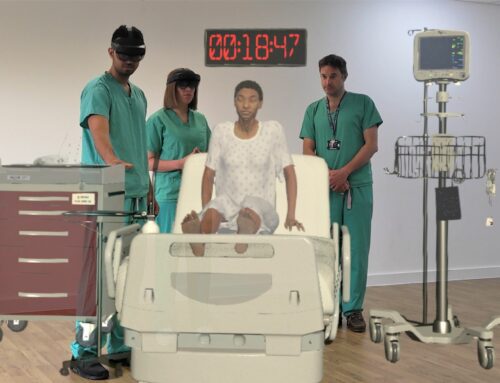By Hattie Oshun, PA, Co-Founder, CallonDoc
The global pandemic has changed almost every aspect of our lives. From how we collaborate with colleagues, to how we celebrate with friends, to how we access healthcare, almost nothing is the same. But some things never change, and these are the things that make us most human: our need for connection, and our need for care.
In an ironic twist of fate, the global pandemic has made the doctor-patient relationship more important than ever while social distancing has posed unprecedented challenges to accessing it. But necessity is the mother of invention, so it should come as no surprise that COVID-19 has driven at-home healthcare innovations and accelerated existing healthcare trends at an exponential rate of adoption.
Telehealth use is skyrocketing
Chief among these trends is telehealth (also known as telemedicine), a word that translates to healthcare at a distance. Telehealth allows patients to connect online with their healthcare provider, receive a diagnosis, fill a prescription, access their medical history, and much more — all from the comfort of their own home.
Even before the pandemic began, telehealth was a steadily growing phenomenon. But in March of 2020, as shelter-in-place protocols were instated and both doctors and patients sought safe, convenient, and efficient ways to deliver and receive care, telehealth use skyrocketed more than 4,000%.
Now that widespread patient populations and healthcare providers are having positive, firsthand experience with telehealth, it is rapidly becoming the preferred way to access non-critical care. In other words, telemedicine is set to become the “next normal.” The question now is not whether consumers will rely on technology to access remote care, but rather, how to best use it to deliver the same quality of care that has traditionally been created through in-person visits.
The doctor-patient relationship remains central and begins and ends with trust
To serve my patients humanely and effectively, I must earn their trust on many different levels. I must earn their trust by listening carefully to them (this includes paying attention to their body language), actively empathizing with them, and asking thoughtful questions based on what I hear.
I must earn their trust by discussing their complaint or condition with them in language that they can easily understand. I must also earn their trust by empowering them to productively participate in their own care to improve treatment outcomes. Whether virtual or in-person, trust must be earned in every single visit. And just as relationships of trust must be built over time, a patient’s health must be tracked over time. This is the only way to accurately determine the trajectory of their health and which treatments or interventions are best serving them.
The level of care that I can deliver my patients depends greatly on my quality of connection with them, which dictates the level of trust I can build with them. This means that to some degree, I must get to know patients personally. A patient is not just a body with a medical problem for me to solve. A patient is a person with hopes, dreams, and challenges who is doing their best to live a healthy, happy, fulfilling life. (And who is coming to me for the part I can play in helping them do this.)
Key considerations when accessing a telehealth provider
Whether patients come to healthcare providers virtually or in-person, they are in pain, discomfort, or anxious about the threat of such, and are therefore in a position of medical and emotional vulnerability. Whether a patient is seeking a new healthcare provider or connecting with a doctor who has cared for them for decades, the ongoing need to build and maintain trust never diminishes.
When seeking telehealth services or transitioning to virtual visits to connect with an existing healthcare provider, here are some things to keep in mind for ensuring the experience is a positive one for all parties.
● If you do not need critical care and prefer to rely solely on telemedicine, be sure to work with providers who have established protocols for ensuring consistency of care. Don’t be afraid to ask the healthcare provider’s office about how long they’ve had telehealth in place and how patients are responding to it.
● Most clinics now offer the option of virtual visits. If you take advantage of this convenient option, treat it the same way you would as an in-person appointment. (Arrive on time and have any relevant medical records on hand. If you can’t make your appointment, be sure to give at least a 24-hour cancellation notice.)
● If you don’t see a healthcare provider regularly but are evaluating potential candidates, ask how many full-time physicians are on staff. Also, ask about whether you’ll be able to work with the same doctor on an ongoing basis. (It’s hard to build relationships of trust when you’re playing “musical chairs” with various healthcare providers.)
● Doctors and patients alike benefit from connecting regularly. Especially in the current climate, connecting more frequently (but in shorter increments) with your healthcare provider can help ensure better care for your short- and long-term future.
Although the coronavirus has dramatically changed the healthcare landscape, the need for connection and care as delivered through the doctor-patient relationship remains the same. Whether virtual or in-person, personal relationships of trust between patients and healthcare providers represent the bedrock upon which humane and effective treatment rests. Although telehealth poses unique challenges, it also offers promising opportunities for meeting our most basic human needs in new and rewarding ways.












